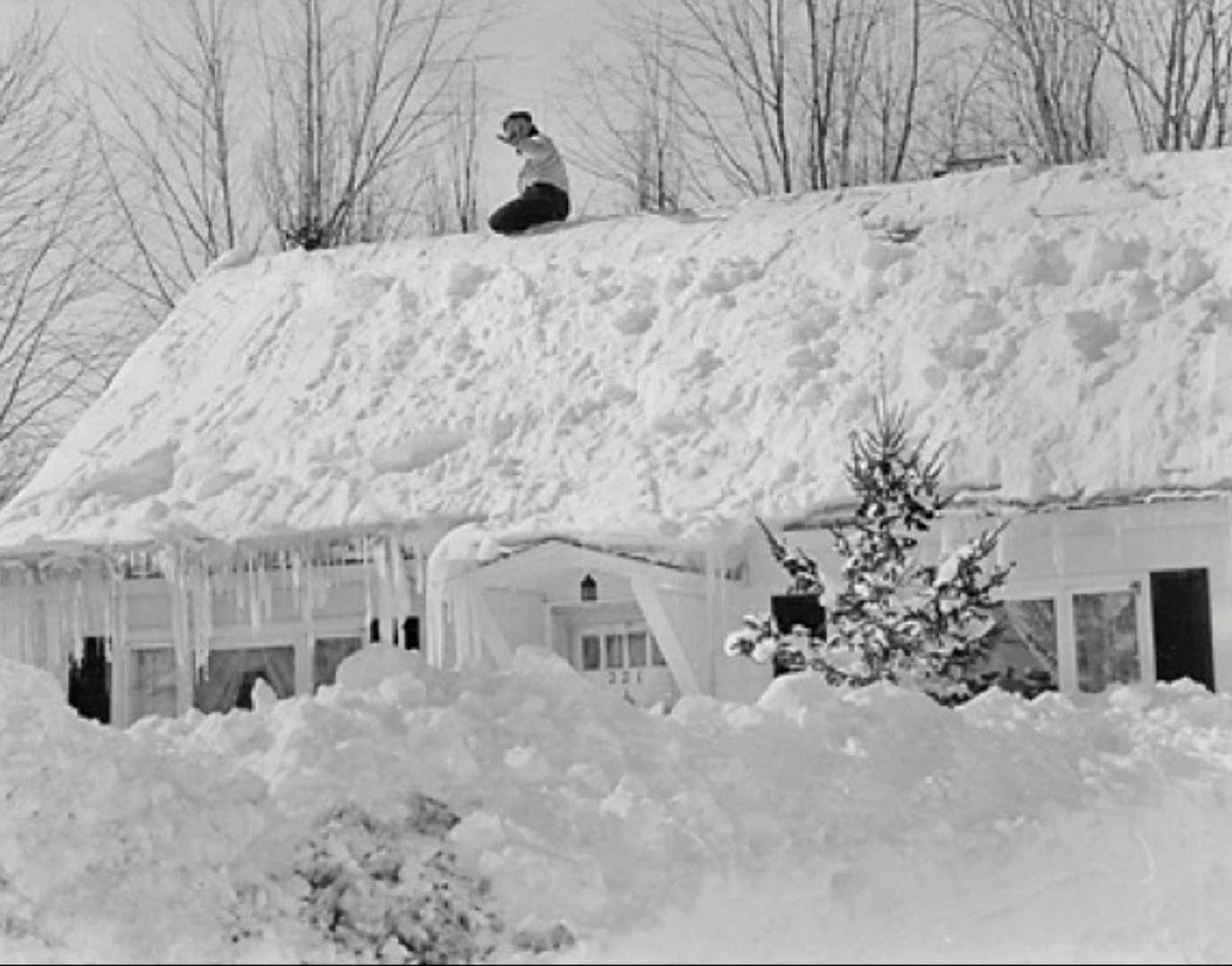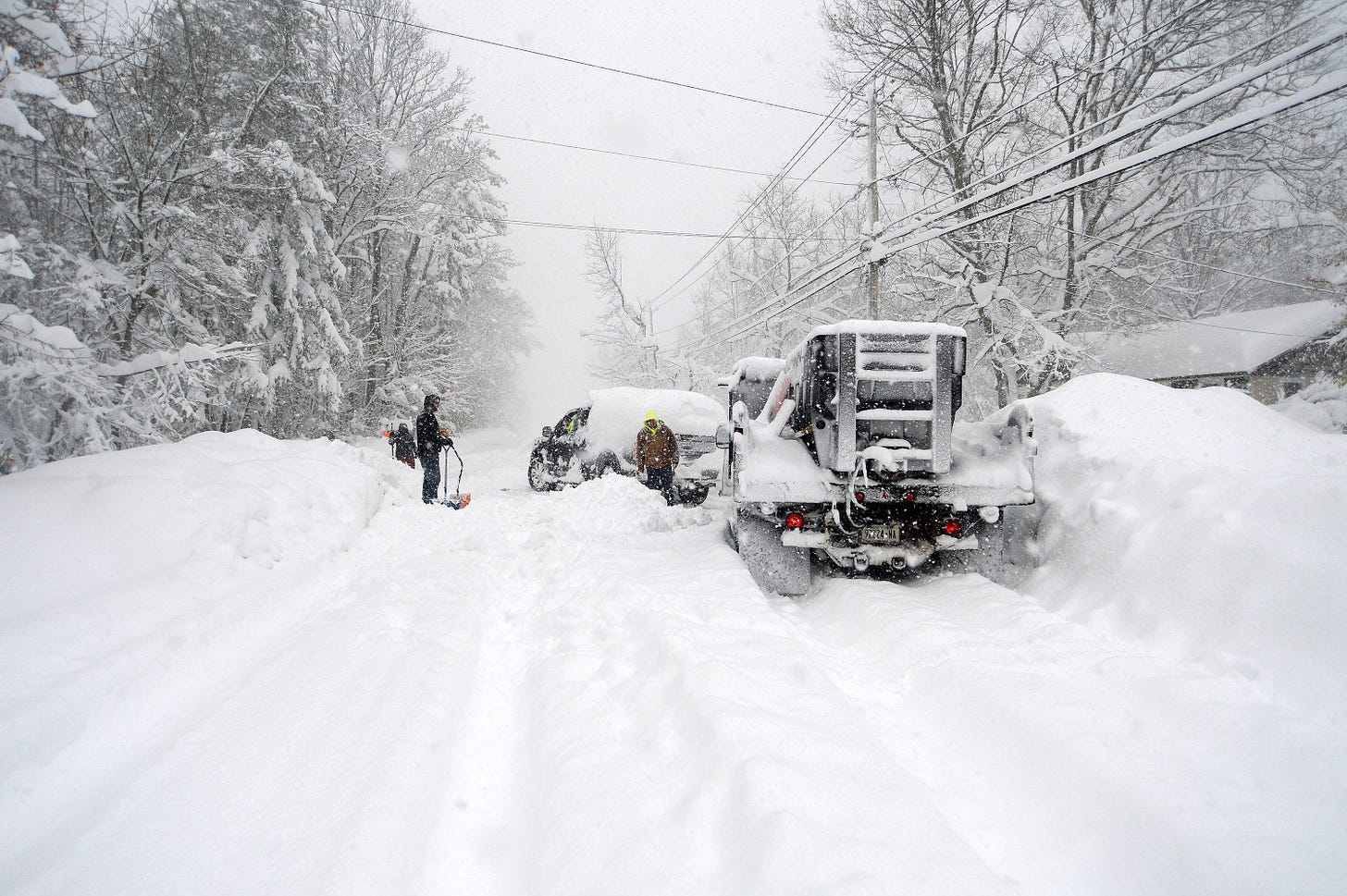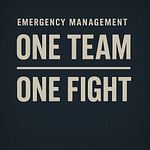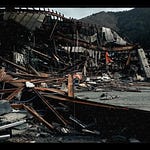If you follow me, you know that I was born in Buffalo, N.Y., and I still have family and friends living there. During the Winter Storm Harper, I was in contact with my sister, a retired baker and grandmother in Lockport, and my nephew, who lives with his family in Buffalo proper. I have been following the response and recovery of the area.
I lived through the Blizard of 77’ when I was a kid. It was fun for a seven-year-old playing in the snow and being home from school. I recall the community coming together. I lived in the Town of Tonawanda, in the village of Kenmore. My father owned a few restaurants in the Buffalo region and was very concerned about losing food and supplies because of the power being out. I talked to him about the storm when I got older, and he reminisced about how people helped each other, even using snowmobiles to run to the local Tops. My father was very complimentary about how the highway department and the national guard cleared the roads.
Buffalo and the hardy people that live there have the reputation of being able to handle snow. It is a pride thing for the people of that region. However, the Blizzard of 2022 is the worst storm impacting Buffalo in 45 years and now will be remembered as one of the most devastating weather events in the city's history. The issues that faced the leadership and those impacted by this event were more than just snow. A few weeks later, you would not even know that the snow was there. Temperatures rose into the 50s (Fahrenheit), and the snow was gone.
The major issue that Buffalo is facing and may have made the results of this snow worse is the city has an aging infrastructure problem.
The Buffalo News reported in the summer of 2022 that City Officials said a majority of Buffalo water pipes are 70 to 80 years old. The city repairs anywhere from 50 to 80 water main breaks in the winter months a month. The storm also highlighted how fragile the national electric grid is. The storm brought heavy snowfall and high winds, causing widespread power outages, road closures, and significant damage to infrastructure. Unfortunately, the storm's severity was exacerbated by the lack of planning and preparation by city officials.
Henry Louis Taylor Jr., director of the University at Buffalo’s Center for Urban Studies, commented on the city's issues, stating, "The city and others know this [Infastruuctor issues] and should have had a disaster plan. In fact, they had no plan.”
In the weeks leading up to the storm, forecasts indicated that a significant winter storm was headed toward Buffalo. Despite this, city officials failed to take the necessary steps to prepare for the storm. Many residents reported that they saw little to no effort on the part of the city to clear snow from the streets, and emergency responders were ill-equipped to handle the volume of calls for service.
Additionally, the city's emergency management plan was not activated until well into the storm, leaving residents and emergency responders without clear guidance on how to respond. This lack of planning and preparation resulted in widespread confusion and chaos, with many residents left stranded without power or means of transportation.
The lack of planning for the Buffalo Blizzard of 2022 also highlights the need for a dedicated emergency manager. Currently, Buffalo does not have anyone responsible for coordinating and implementing emergency plans and procedures before, during, and after such a storm. By having a dedicated emergency manager in place, the city would have been better prepared to respond to the storm and mitigate its impact on residents and infrastructure.
Furthermore, many people stated that there is a need for more communication between city officials and residents. Many residents reported waiting to receive official information or updates about the storm or the city's response. This lack of communication left residents uninformed and uncertain about what to do during the storm. It also hindered the efforts of emergency responders to reach those in need.
The Buffalo Blizzard of 2022 was a devastating event made worse by city officials' lack of planning and preparation. The storm highlights the need for dedicated emergency management professionals and better communication between city officials and the public. It is vital that the city learns from this experience and takes steps to improve its emergency management plans and procedures to ensure that it is better prepared for future disasters.
The cost of hiring a disaster manager may seem high, but it is a small price to pay for the protection and safety of the city and its residents.
The Cascading event
The blizzard, which lasted for four days, resulted from a combination of factors that created a cascading disaster that brought the city of Buffalo, New York, and the surrounding area to a standstill.
The first factor contributing to the blizzard was a strong low-pressure system that developed over the Great Lakes. This system brought high winds, heavy snowfall, and extremely low temperatures. The National Weather Service issued a blizzard warning for Buffalo and the surrounding area as the storm approached.
The second factor that contributed to the blizzard was the storm's timing. The blizzard hit Buffalo during the busiest time of the year, just before the Christmas holiday. This meant more people on the roads, more cars on the highways, and more holiday shoppers in the malls. As a result, when the blizzard hit, it caused widespread chaos and gridlock.
The third factor that contributed to the blizzard was the city's inadequate infrastructure. Buffalo's roads and highways were not built to handle the amount of snowfall and ice that the blizzard brought. This led to widespread power outages, and many people were trapped in their homes or stranded in their cars.
The final factor that contributed to the blizzard was the poor response from city and state officials. Despite the warning issued by the National Weather Service, many residents were caught off guard by the storm's severity. Emergency crews were overwhelmed by the number of calls for help, and many people were left stranded without assistance.
The Buffalo Blizzard of December 2022 was a cascading disaster caused by a combination of factors. The storm's timing, the city's inadequate infrastructure, and the poor response from officials all contributed to the catastrophic outcome. The event serves as a reminder of the importance of preparedness and effective planning in extreme weather events.
The City of Buffalo needs a dedicated emergency management office to lead its emergency management efforts. This organization would be responsible for the overall coordination and implementation of emergency plans and procedures, working closely with the city government to establish policies and procedures that promote resilience and ensure continuity of operations during a disaster. The cost of hiring an emergency manager may seem high, but it is a small price to pay for the protection and safety of the city and its residents.
And Oh yea! Let’s Go, Bills!



















Share this post